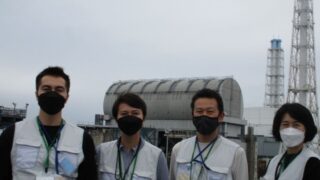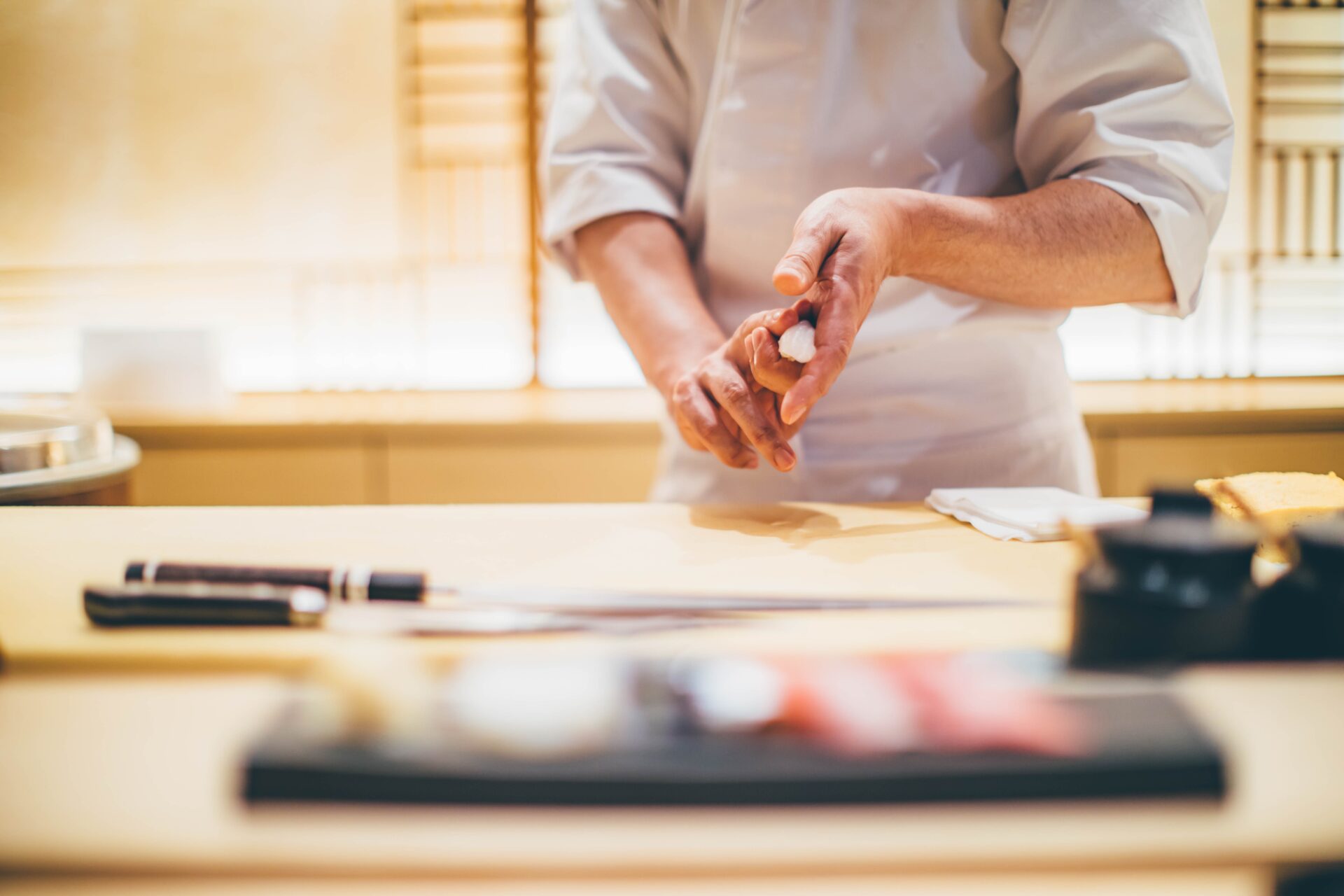Note: This article about the Fukushima Exclusion Zone was written by a member of our company and is based on her own eye opening experience visiting the exclusion zone for the first time.
In 2018, some of our members visited the Fukushima Exclusion Zone on a tour from Tokyo, where many of the people had still not returned to their homes. However, a lot has changed in the last 4 years. Read about our experience in our article from 2018 about the Fukushima Exclusion Zone and see how different things are now and how far Fukushima has come in just 4 years.
We have a very informative 2-day tour from Tokyo where you will have the chance to visit the Fukushima Daiichi Nuclear Power Plant as well as other areas of the exclusion zone. This experience will give you the opportunity to learn more about what happened back in 2011 as well as what the situation is like now and how much progress Fukushima has made over the last 11 years. For those who can’t make it to the 2-day tour, we also offer the 1-day tour from Tokyo visiting the coastal area of Fukushima to get a deeper understanding of the disaster.
Available dates for our Fukushima Exclusion Zone Tours in 2023
| Fukushima Exclusion Zone 1-Day Tour from Tokyo | August 30 September 13, 27 October 11, 25 November 8, 22 December 6,20 | Book here |
| Fukushima Daiichi Nuclear Power Plant Visit 2-Day Tour from Tokyo | September 5-6 October 1-2 November 1-2 December 1-2 | Book here |
- Introduction
- Futaba Station
- FUTABA Art District
- Station Plaza Futaba
- The Great East Japan Earthquake and Nuclear Disaster Memorial Museum/Futaba Business Incubation and Community Center
- Ukedo Elementary School
- MICHINOEKI NAMIE
- Fukushima Daiichi Nuclear Power Plant Tour
- Other articles you might be interested in
Introduction
11 years have passed since the Great East Japan Earthquake on March 11, 2011. Although I am from Fukushima Prefecture, I have never visited the exclusion zones before. I felt that if a non-resident of the area like me made the trip there, it may offend the local residents, as the damage suffered by the people of the exclusion zones is so different from how my own town was affected.
Before making the trip, when I would post about the area on social media, I felt that I could not accurately convey the current situation of the disaster-affected areas properly. Therefore, in March 2022, in order to get a better idea of the whole situation, I went to see the coastal areas of Fukushima Prefecture for myself.
Futaba Station
I took the Joban Line to Futaba Station. The Joban Line was out of service between Tomioka and Namie Station after the disaster, but the entire line started up again in March of last year. On the way to the station, there is a beautiful view of the sea from the train. In the area immediately west of Futaba Station, public housing and subdivisions were being developed in preparation for the start of occupancy in October. After 11 and a half long years, residents will finally be heading back to Futaba Town.
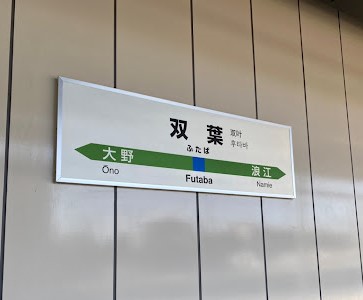

What surprised me as I headed towards the ticket gate was that it is available for use with Suica. For people living in the Tokyo metropolitan area it may seem a bit strange, but there are many stations in Fukushima Prefecture where you are not able to use your Suica card.
In addition, since the area south of Namie Station is a part of the Tokyo metropolitan area, if you are going there from a different area, you should be aware that you may not be able to pay for your train fare when you get off the train.
FUTABA Art District
As you go down the stairs to exit the station, you will see a wall painting by OVER ALLs that is part of the FUTABA Art District, an initiative to try to increase the art in Futaba. The woman in the painting here is Ms. Yoshida, who used to be the owner of “Penguin”, a fast food restaurant that has been a favorite of the locals for a long time. Many other wall paintings have been painted in Futaba Town as well.
Sadly, some of the buildings on which the wall paintings are painted on are going to be demolished. We hope you have a chance to visit the site before that happens.
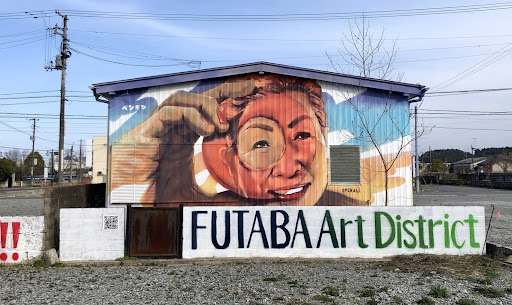
Station Plaza Futaba
The orange building next to Futaba Station is the former station, which is now used as a community center called Station Plaza Futaba. Here, visitors can learn about the recovery progress from the disaster and the shuttle bus service, as well as view panels showing faces and messages to Futaba Town left by visitors. I read some of the messages from visitors, many of whom had come from far away, and their messages of support were very touching.

The Great East Japan Earthquake and Nuclear Disaster Memorial Museum/Futaba Business Incubation and Community Center
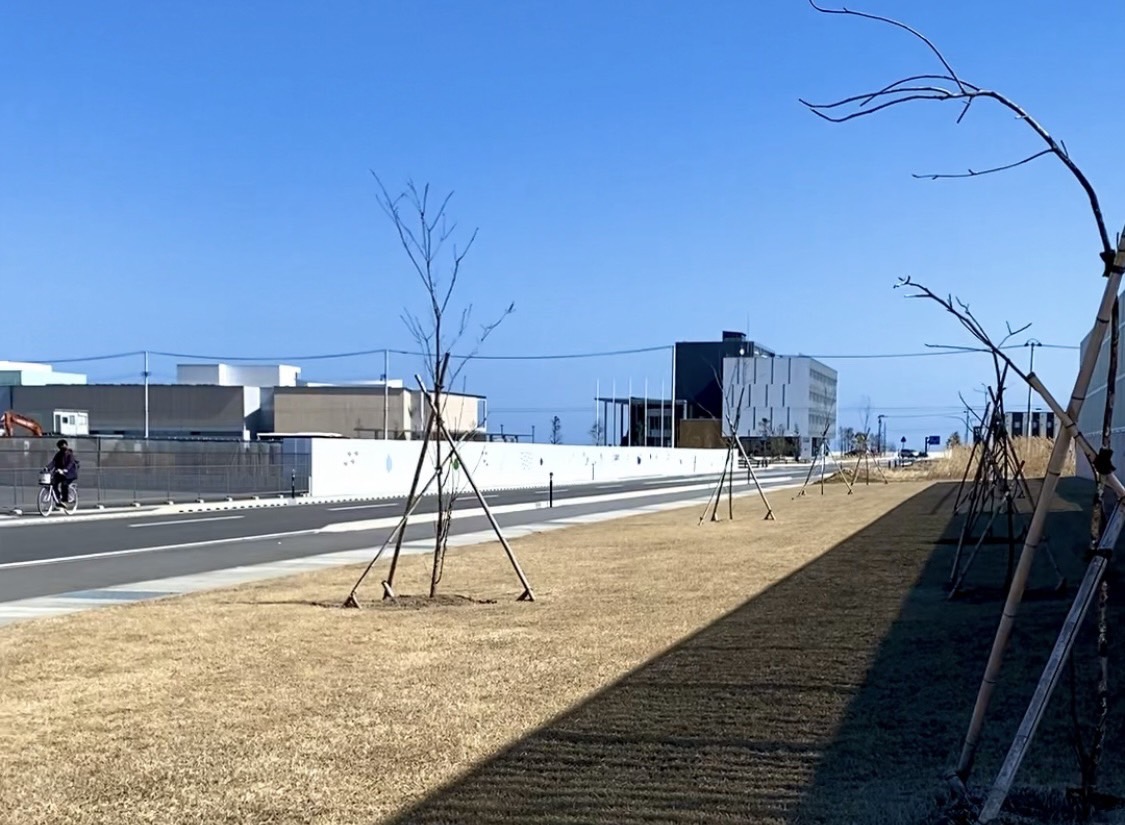
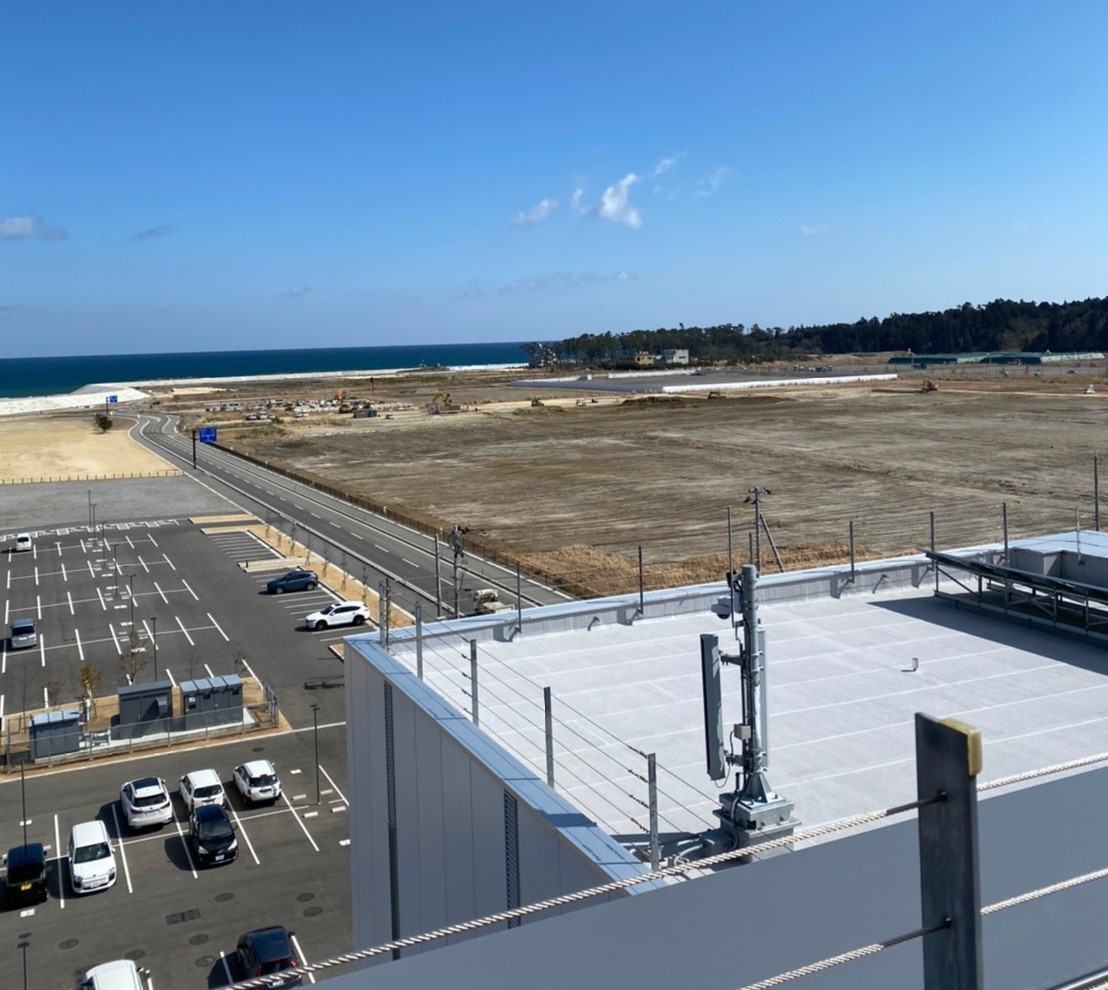
Take the shuttle bus from Futaba Station, and you will arrive in front of The Great East Japan Earthquake and Nuclear Disaster Memorial Museum and Futaba Business Incubation and Community Center(F-BICC) in about five minutes. As I approached these facilities right by the sea, the number of buildings diminished and there was a lot of open cleared land.
The Fukushima Daiichi nuclear power plant accident is often compared to the Chernobyl nuclear power plant accident. However, while Pripyat, where the Chernobyl Nuclear Power Plant was located, was built to operate, the Fukushima Daiichi Nuclear Power Plant was built in a town where people had been living for generations, where the land, traditions, and culture had been passed down from generation to generation.
Even after the disaster, the townspeople have continued to preserve their traditions even after leaving their hometowns. Following the nuclear accident, Pripyat has been left in ruins, but it is different in Fukushima where reconstruction is underway in the towns surrounding the power plant so that residents can once again return to their homes.
The area where the Great East Japan Earthquake and Nuclear Disaster Memorial Museum and F-BICC are located have become the reconstruction industrial base for the Nakano district of Futaba Town. Although the land is still cleared and empty, the area is being developed as a sort of workspace to bring in new companies.
Futaba Business Incubation and Community Center
F-BICC has a souvenir corner, a restaurant, and a conference room. I had ” Namie Yakisoba,” for lunch at Sendantei. This restaurant is located in the food court on the first floor and won the 2013 B-1 Grand Prix. Namie Yakisoba is made with extra-thick noodles(three times as thick as normal yakisoba noodles), pork belly and bean sprouts, and is topped off with a rich sauce. Inside the center, there is a Futaba Town Tsunami Hazard Map, with easy-to-understand instructions on what to do and what to take in case of evacuation. In the souvenir corner, there are not only Futaba Daruma and sake, but also Kitakata ramen noodles and other souvenirs from the Fukushima area. There is also a cute Daruma and Akabeko gacha(toy vending machine), so be sure to check it out if you have the time.
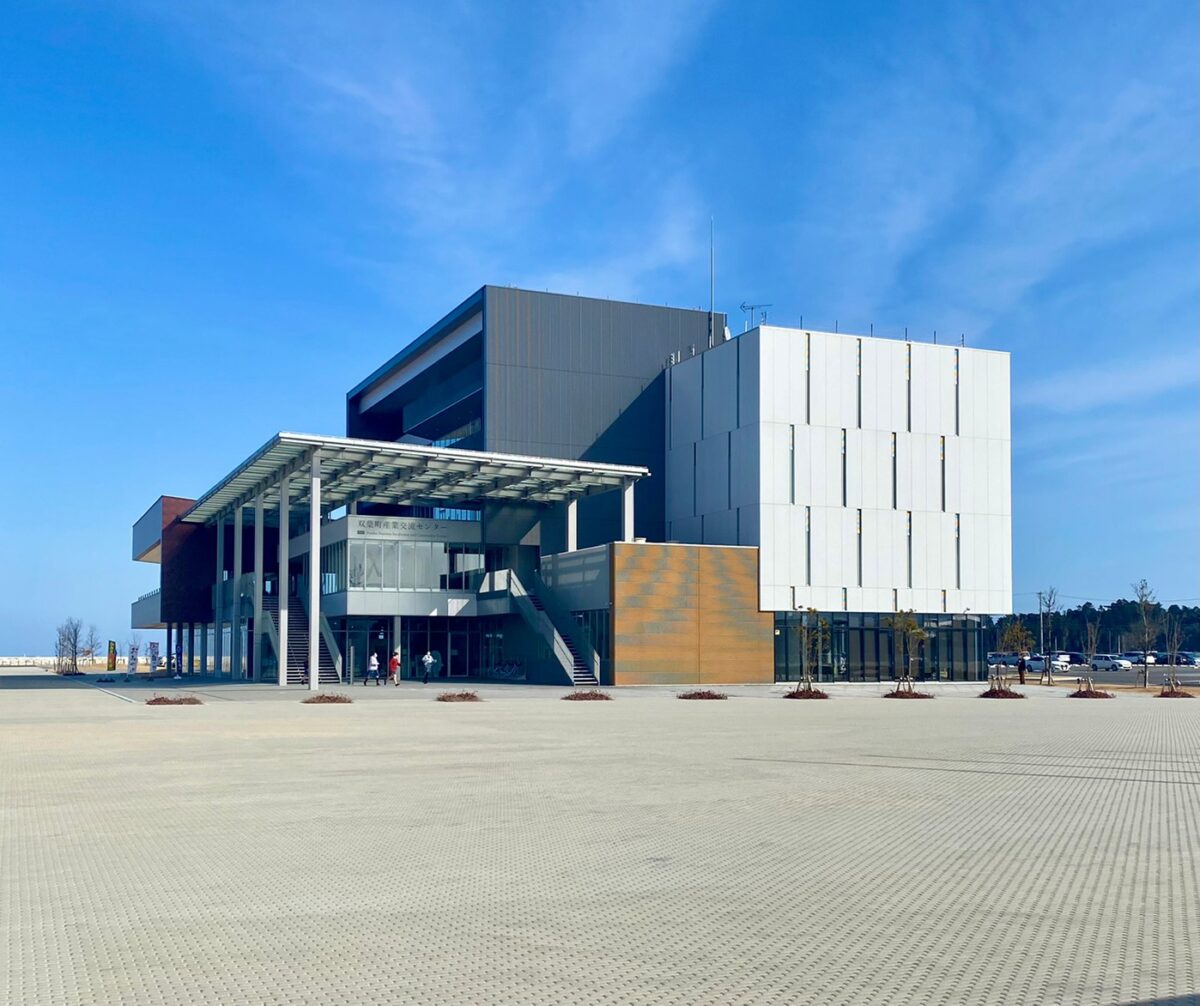
From the rooftop observation deck, you can see the beautiful blue Pacific Ocean. However, looking out at the ocean from the F-BICC(Futaba Business Incubation and Community Center) you can see the interim storage facility on the right and Ukedo Elementary School on the left, which was recognized as Fukushima Prefecture’s first earthquake memorial ruins. Thinking about the damage and human tragedy that happened 11 years ago, as well as the ongoing reconstruction work, I had complicated feelings when looking out at the beautiful ocean.
Great East Japan Earthquake & Nuclear Disaster Museum
The Great East Japan Earthquake and Nuclear Disaster Museum features exhibits about the events that happened in 2011, the response immediately after the nuclear accident, and the challenges of reconstruction, not only the situation at the time, but also the future of the coastal areas.
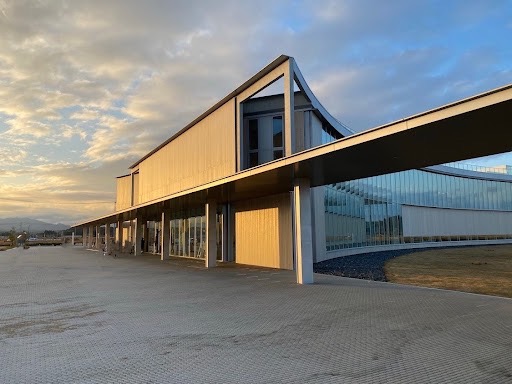
The museum is also part of the Fukushima Innovation Coast Framework, a national project that aims to build a new industrial base to restore industries in the coastal area that were lost due to the events in 2011. In the photo exhibit area, there are several large photographs on display. One was of children playing happily at the temporary housing, one was of shoes bought for a child who passed away, and another was of a man who had lost his family and was in tears, showing the different situations and emotions of each person affected by the disaster.
Storytellers also give lectures here. One of the storytellers was living in Tokyo at the time of the disaster, but since he was working in the construction industry, he volunteered in Soma City and other areas to raise awareness about the disaster. I was lucky enough to hear him speak. What particularly impressed me about him was his comment where he said, “The accident happened in Fukushima, but Fukushima Prefecture is under the jurisdiction of Tohoku Electric Power Company, and the accident actually happened at a Tokyo Electric Power Company (TEPCO) Nuclear Power Plant. The electricity being produced there wasn’t actually being used in Fukushima, but was being sent to the Tokyo metropolitan area. So I also want people in the Tokyo metropolitan area to think about this accident and the decommissioning work.”
Even 11 years after the accident, it will take decades longer until the decommissioning work is completed. There are still many issues to be addressed, but I really wish more people would think about these issues proactively and not just about Fukushima alone.
Ukedo Elementary School
Ukedo Elementary School was severely damaged by the tsunami and was recognized as the first earthquake memorial ruins in Fukushima Prefecture. However, although it is located 300 meters from the sea, all the students were safe because they immediately evacuated to the mountains. Visitors can tour the school building, which has been maintained as an earthquake memorial ruin, and learn about what was there originally, as well as see photos of students learning before the tsunami damage, so that visitors can see a before and after of the school.
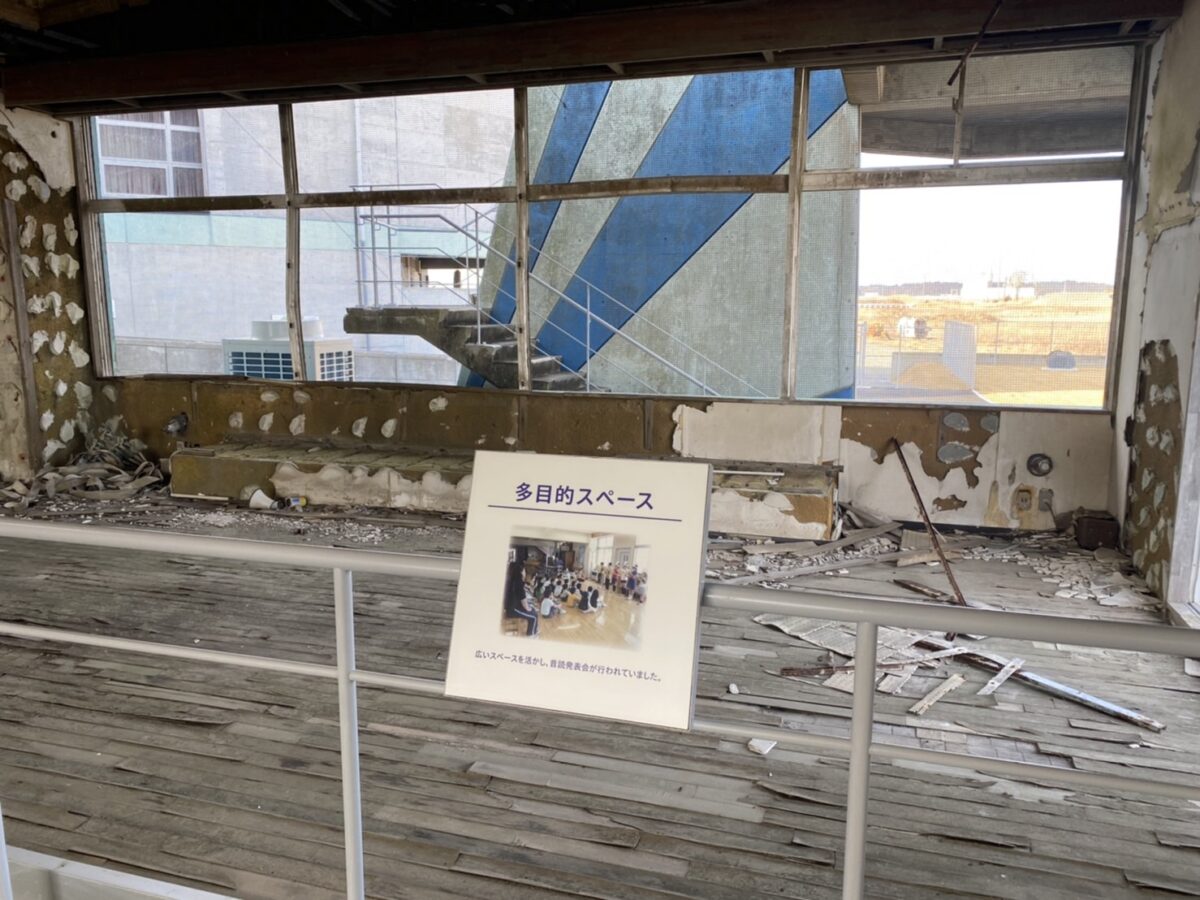
I was reminded of the horror of the tsunami by the changes in the school building to the extent that I doubted if it was really the same place or not. I thought about how scary it must have been for elementary school students to evacuate from the tsunami in the midst of fear after having just experienced a massive earthquake. I think it is miraculous that all the students were safe even though they were only 300 meters from the sea. To me it reiterated that damage and casualties can really be minimized by quick response.

On the blackboard in the classroom on the second floor of the school building, there were messages from the Japanese Self-Defense Forces who helped with the disaster rescue as well as from people who visited the elementary school after the disaster, showing that everyone was united in their efforts to overcome the situation.
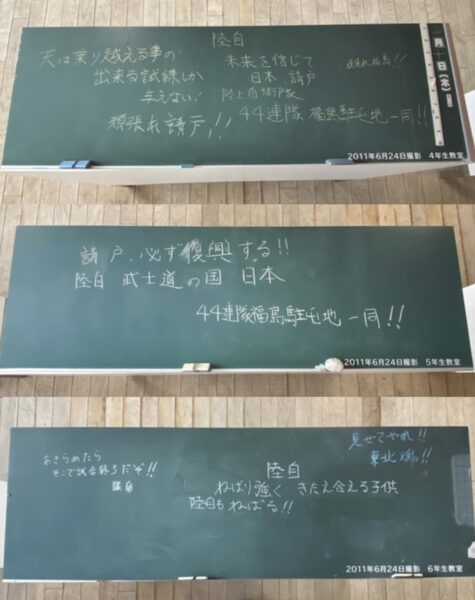
We do not often think about disasters in our daily lives, but this is an opportunity for us to rethink about what could potentially happen to us at any given time.
MICHINOEKI NAMIE
My last stop was the roadside station, MICHINOEKI NAMIE. It was established as a landmark and a symbol of the town’s recovery. As a roadside station, it has a produce stand, restaurants, and a tourist information corner. They also offer both a pottery and local sake tasting experience, and have a Chansey Pokemon park. They have some exclusive souvenirs that are only available there, so be sure to check out the souvenir area when you visit Namie Town.
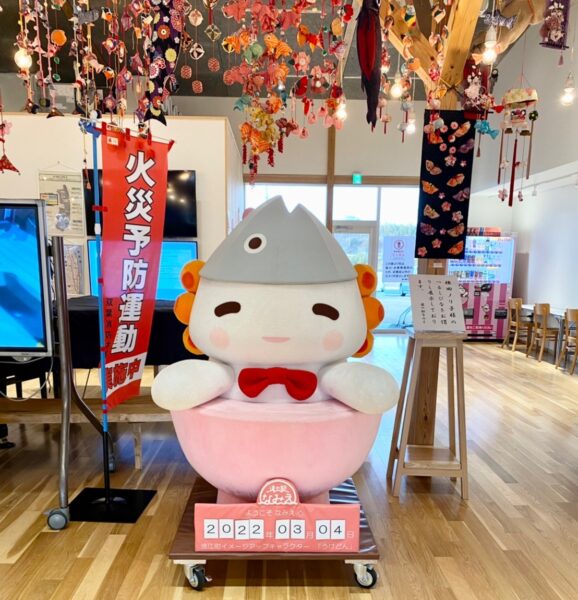
It has been over a decade since the Great East Japan Earthquake, but recovery in the area is still an ongoing process. Although the exclusion zones give a strong impression of being a place where tragic things occurred, it is also a place where reconstruction is gradually progressing and there is hope for the future.
By visiting the exclusion zones, we hope to not only deepen our understanding of what happened then, how things are now, and what the future will look like, but also to provide an opportunity to think about the future of Fukushima, the region and society to which you belong.
Fukushima Daiichi Nuclear Power Plant Tour
For those of you who are in Japan or are planning on coming to Japan at some point in time, we highly recommend taking a tour to the exclusion zone. The Fukushima Daiichi Nuclear Power Plant Visit 2-Day Tour from Tokyo and Fukushima Exclusion Zone 1-Day Tour are great tours with a knowledgeable and insightful guide who will explain the past, present and future of Fukushima to you. We hope this experience can help broaden your understanding and way of thinking about the situation as well as have an impact on your life as a whole.
Available dates for our Fukushima Exclusion Zone Tours in 2023
| Fukushima Exclusion Zone 1-Day Tour from Tokyo | August 30 September 13, 27 October 11, 25 November 8, 22 December 6,20 | Book here |
| Fukushima Daiichi Nuclear Power Plant Visit 2-Day Tour from Tokyo | September 5-6 October 1-2 November 1-2 December 1-2 | Book here |

Follow us on Instagram, Facebook and Twitter for more travel inspiration. Or tag us to get featured!
Happy traveling!
Other articles you might be interested in
▼Check out our most recent article about Fukushima Exclusion Zone Tour

Asahi Eda is from Naka‐dori, Fukushima Prefecture. Her favorite foods from Fukushima are braised pork noodles from Tora Shokudo and Shimiten from Konohata.
This post may contain some affiliate links. When you click through and make a purchase we may receive some commission, at no extra cost to you.

